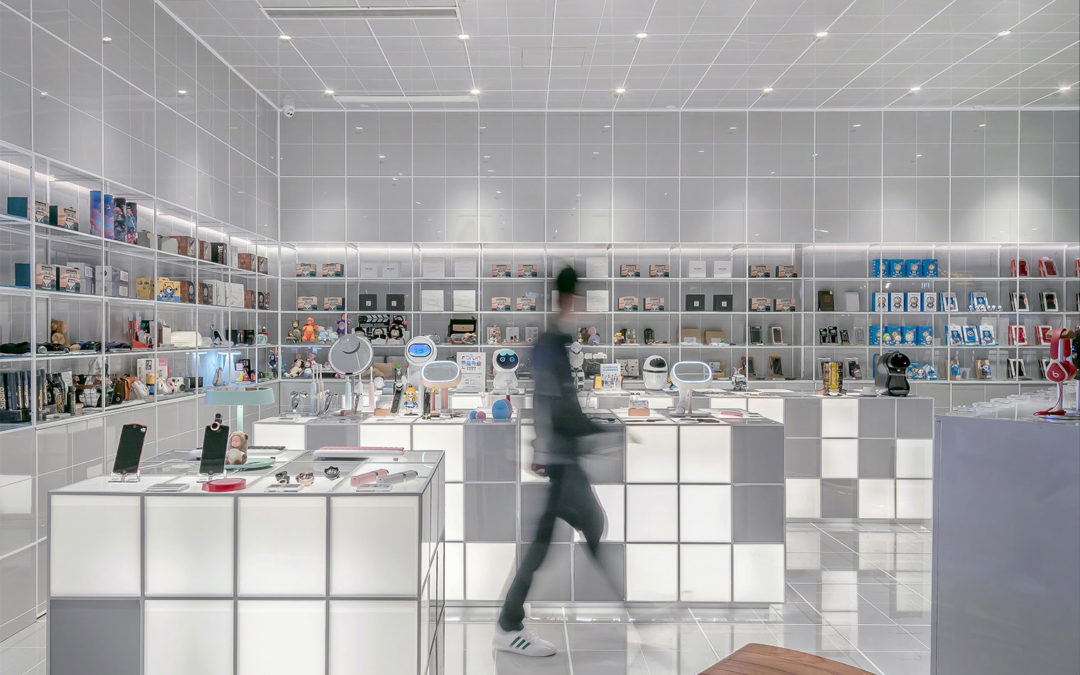
by Don Pingaro | Sep 21, 2019 | Commerce Strategy, System Integrations
Congratulations! You survived the Back to School retail surge. While the true test of eCommerce performance is yet to come, any hurdles you encountered during Back to School should be taken care of well before then. Consider these your warning shots. To help, here are 3 precautionary measures you can take to digitally strengthen your store for the holidays.
1. Stress Test to Avoid Lost Revenue
A wave of more than 6.2 billion shoppers will descend on digital retailers during Cyber Week. Unfortunately, not all businesses are prepared for success…
For example, J. Crew’s site crashed on Black Friday in 2018 and issues persisted throughout the afternoon. Analysts predict the outage cost the company around $780,000 in just five hours. Shoppers flocked to Twitter to complain en masse, causing a firestorm of anger to erupt across the web. This is where the real damage was done. Like a ghost story from holidays past, this is a warning for retailers everywhere to change for the better.

Redstage’s CEO Adam Morris identified the top “holiday rush” issues we’ve helped clients through in years past. Here’s what to watch out for:
1. Slow Site Speed
2. Price Caching
3. Broken or Buggy Checkout
4. Server Overload or Timeout
5. Add to Cart Features Failing
“The holidays are a time of increased profits, but that comes with a huge load on websites,” Morris says, “So if you haven’t done proper stress testing to account for higher demand, you won’t know how your online store is going to react.”Adam Morris, CEO at Redstage
Preparing for the worst now can save you money and your reputation later with one simple step— testing. Skipping this step could spell disaster that leaves the specter of poor service hanging over your reputation for years to come.

2. Your Back-End Checklist at Present
From Thanksgiving to Black Friday through the end of Cyber Week, retailers have a few critical days to rake in as many sales as possible. During this shopping frenzy customers both in-store and online. Regardless of how they buy, your online store (or your app) will more than likely be their first stop. We developed a checklist of what you can do today to ensure your eCommerce site survives Cyber Week.
- Optimize your site’s user experience with A/B testing.
- Check your indexing to avoid price caching.
- Review all error codes to avoid a broken checkout.
- Avoid overload and crashes by scaling your server.
- Double-check key functions to avoid important features failing.
- Complete load testing to prepare for an increase in traffic.
- Utilize an automated monitoring system for real-time updates on 404s and checkout errors.
- Upgrade your payments and security platforms to prevent payment fraud.
- Lastly, be prepared to scale up your support team on the fly. If something goes wrong, even for a few minutes, you’ll need a sizable support team to manage angry customers and correct the issues.
“If you’re not using visitor data to identify the friction points in your checkout, you risk focusing your budget in the wrong places. A data-driven approach to optimization means trusting your analytics even when the message is counter-intuitive.”Oliver Sosinsky, Sr. Solutions Engineer at Redstage
Learn a valuable lesson from LuLu Lemon. Last year, the athleisure brand’s site went down the morning of Thanksgiving Day. Shopper outrage hit Twitter at 8am EST with a “Site is down. Ugh!”
In the first minutes of the shopping event of the year, the brand was stuck, entangled in crisis. Once the site got back online, more errors appeared, causing sales prices for in-cart items reset to regular prices or prevent customers from checking out.
With proper bug monitoring and back-end preparations, this fiasco could have been avoided. Take a page out of our book and start monitoring now. You’ve done the legwork to bring customers to your site, now protect it.

3. Capitalize on the Future
A single visitor doesn’t guarantee a transaction and a single transaction doesn’t guarantee a loyal customer. Flawless mobile experiences will do both, but takes some serious testing.
Conversion rate optimization turns your visitors into customers while ensuring they receive an immaculate customer experience. While no two customers are the same, simple tests can lead to enhancements that remove friction from the checkout and dramatically reduce abandoned carts.
Merchants like LawnmowerTirestore.com took advantage of testing their site before the holiday season and the results were a game changer. By making their checkout button stick to the site’s header and follow users while they scrolled, sales soared with a 29.5% increase in revenue per visitor (RPV) for desktop customers. For mobile, the test yielded a 7% increase in RPV, after only 4 weeks of testing. Now, Lawnmower Tirestore plans to roll-out the feature site-wide to capitalize on their new-found data-driven advantage.
As part of the Mobile Optimization Initiative, retailers can receive checkout tests 100% free. The goal of the initiative is to create a set of best practices for mobile optimization and share our insight with the world. Read more about the initiative here.

Final Thoughts
According to Internet Retailer, 60% of consumers plan to spend 50% or more of their holiday shopping online; spending over $21.6 billion during Cyber week.
It is not too late to prepare. If you start early enough and cover all the bases, you can sit back, relax and watch your revenue grow with measurably less stress. Remember, this is your holiday too. While there’s still time, monitor your site for bugs, load test, A/B test, utilize the data, capitalize on those results, and enjoy some eggnog.
Cheers!

by Don Pingaro | Feb 5, 2019 | Commerce Strategy, System Integrations, Web Development
It’s 2019. Accessibility and social justice are everything. As a result, ADA compliance lawsuits are being filed in record numbers, and eCommerce companies are a major target. Here’s the info you need to understand the issue and protect your online business.
ADA Compliance Crackdown
Although the U.S. Department of Justice has delayed the release of the latest federal accessibility guidelines, companies are expected to comply with the Web Content Accessibility Guidelines (WCAG) 2.0 AA. Resulting from this lack of federal guidance, users with disabilities are lawyering up against even the biggest online behemoths.
Among these, Amazon, Apple, and Nike have been called out for failure to comply with Title III of the Americans with Disabilities Act, along with hundreds of other businesses, driving a torrent of actions.
According the the Bureau of Internet Accessibility, there were ”at least 814 federal web accessibility lawsuits filed in 2017, but an assessment of the issue by ClassAction.org shows the number of lawsuits [filed] in 2018 may far surpass that number.”
In fact, in the first two months of 2018, roughly 200 different ADA lawsuits were filed against websites, at which point retail law advisory Goulston & Storris announced there was “No Relief in Sight”.
While it remains unclear just how many lawsuits have been brought since last March, it is expected for this surge in suits to continue.
Why Haven’t I Heard About This?
If you haven’t been targeted yet, chances are you know someone who has. If not, the reason you haven’t heard about this is simple: The Wayfair case. The recent explosion of content on the Supreme Court’s South Dakota v. Wayfair decision incited a media frenzy that circled eCommerce’s corner of the web, from top news agencies to the smallest tech blogs. With the industry distracted by a wide-reaching tax-compliance issue —and retail giants like Nike keeping tight-lipped about their lawsuits— the compliance issue has remained largely under the radar.
In 2018, more than 13,000 suits were filed over online ADA compliance as of October, with eCommerce playing a large role. It’s not the issue alone that’s troubling, it’s the rate at which suits are being brought that’s startling. Last year, 7663 suits were arraigned in federal court, which at the time was a 16% increase over the previous year (see chartL ADA Title III Lawsuits in Federal Court: 2013-2017).
With an ever increasing number of lawsuits looming on the horizon, the industry may face a 20% increase over last year for 2019. “I spoke with someone about these suits during Magento Imagine 2018. Just as the conference was ending, they received an email saying their own site had been targeted and served an ADA suit.” Adam Morris, Redstage CEO said. “eCommerce companies should make accessibility a priority for the year ahead.”
Can My Site Be Next?

While a discriminatory class action suit could spell disaster for any company, the first step is identifying the types of companies that fall into the legal crosshairs. According to the Americans with Disabilities Act, these company categories are as follows:
- Businesses engaged in an industry affeciting commerce (Title I)
- Businesses with 15 or more full-time employees (Title I)
- Businesses operating for 20 weeks or more every year (Title I)
- Businesses categorizes as “Public Accommodations” (Title III) including:
-Inns, hotels, and motels
-Restaurants and bars
-Bakeries and grocery stores
-Hardware stores or any sales/retail outlet
-Banks
-Laundromats and dry cleaners
-Accountants and lawyers’ offices
-Health care providers’ offices
-Public transportation
-Recreation venues
-Schools
-Social service centers
-Gyms
While the ADA compliance is primarily focused on physical locations, Title III states that barring access to people with disabilities in the private sector is discrimination, which encompasses websites. With 15% of the global population living with some form of disability (41M+ Americans), and online shopping being so prevalent – think Black Friday – companies are losing business due to inaccessible websites and continuing to run the risk of being served an accessibility lawsuit.
How is Redstage Being Proactive?
Redstage recently partnered with Siteimprove, an all-in-one software that provides the insights needed to address issues relating to accessibility, as well as SEO, content quality, brand compliance, data privacy, and more.
“The Siteimprove and Redstage partnership is one we’re extremely excited about given our common goal of positively impacting web accessibility.” Siteimprove Sales Director Ted Goldberg Said. “We’re looking forward to working together to help facilitate increased accessibility for their client’s sites as well their own.”
The Redstage team is excited about this partnership, as Siteimprove’s automated accessibility checks help identify website elements that violate WCAG 2.0 guidelines, while also organizing those issues into a prioritized list. By partnering with Siteimprove, Redstage will be able to mitigate risk for our clients while building a strong, overall accessibility strategy.
Conforming Your Site to ADA Compliance
At Redstage, we’ve already had our fair share of engagements with merchants facing ADA lawsuits. “Our clients are seeing increased pressure from legal trolls targeting them because they are not ADA compliant.
The ADA compliance rules are vague at best, so companies with an eCommerce channel should have an informed partner to help them.” Redstage CEO Adam Morris explained. To mitigate this risk, Redstage is working with specialized authorities in the ADA field to give clients and readers a comprehensive ADA compliance report.
“ADA compliance contains many elements of a great UX strategy,” says Adam Piken, Redstage’s Creative Director, “Your site should be user-friendly and intuitive, allowing customers to find buttons, check out, get your phone number, or type a question into your live-chat quickly and easily.” In this way, ADA compliance is reinforcing activities eCommerce companies should already be doing.
Most importantly, ADA compliance takes considerable design alterations in most cases, so the best time to get compliant is during your next redesign or site migration. If you’ve been following along with our Magento 1 End of Life Initiative, we recommend putting ADA compliance at the top of your Magento 1 to Magento 2 migration checklist.
Get Your ADA Compliance Check Now
If you think your site is at risk of being targeted, email us and we’ll get you set up with a team of experts to help identify and eliminate potential access barriers that may impede access and usability for your users, while safeguarding your business from legal action.

by Don Pingaro | Apr 17, 2018 | Commerce Strategy, System Integrations

eCommerce baked-in customer service as a standard. Perhaps early innovators recognized its importance as a differentiator from in-store retail, or maybe it came naturally. Regardless, many traditional retail giants chose to ignore it altogether. In the stories that follow, we’ll explore vast disparities in customer service driving traditional retailers toward bankruptcy while simultaneously skyrocketing eCommerce sales.
Good CX Demands Good Customer Service
Major retailers now seemingly compete with airlines, telecoms and power companies for the worst customer service. The key difference, however, is the range of alternatives. Most regions of the U.S. don’t get to pick between more than two horribly aggravating cable providers, while anyone in the world can choose Amazon over local retailer. As a result, the need for retailers to optimize their customer experiences through customer service is paramount. However, those who only recently realized this may be too late.
Jura Live! A Customer Story:
“Jura LIVE! allows customers shopping online to make live video appointments at their convenience, from the comfort of their own home. Customers can see the products in action in real time and leverage the knowledge of a sales rep. to help them make a purchasing decision. For a luxury product such as a super automatic coffee & espresso machine, this adds a significant amount of convenience to the customer’s experience while also dazzling them with high-end technology. These types of high-touch online experiences help the sites that have them dominate those without. Unfortunately, most brick & mortar stores don’t offer these experiences because they refuse to adapt.”
-Dave Gardner, Sr. Account Executive & Team Lead at Redstage
How Retail Heros Became CX Villains
Sears, JC Penney, and Toys “R” Us are known for major missteps that downgraded their in-store experiences and alienated customers. Sears simply stopped investing in its stores. Years ago, company leadership decided to introduce a poorly-managed customer loyalty program that caused much more harm than good. The “Shop Your Way” program caused extended checkout times; both for customers waiting in line behind someone signing up for rewards AND for loyalty members who facing constant discrepancies in “deal” prices at the checkout.
The Fall From Grace

When sales declined, products began to downgrade, the stores themselves fell to disarray, and customers naturally opted for other retailers like Macy’s and Home Depot. As a poorly planned remedy to decreasing sales, Sears chose to cut in-store staff in half across their locations, propelling worsening structural conditions that led to closures all over the U.S. To this day, the company continues to pump products into stores that no one will buy, without the necessary human capital to even unpack them.
A Sears Auto Story
Recenty, Redstage’s CEO Adam Morris had his own customer service blunder at Sears. He entered Sears Auto looking for a particular item, couldn’t find what he wanted, and exited the store only to discover his car had been towed. According to Morris, the towing company contracted by Sears was watching the security cameras while he was inside. Because he parked in a space for “Sears Auto Customers Only,” and hadn’t made a purchase, he wasn’t considered a customer, which allegedly gave the towing company license to tow his car.
In an attempt to get assistance from Sears, Morris spent hours on the phone with a “rude or unhelpful” customer service representatives. At the end of the ordeal, one rep told Morris to file a police report if he felt he was wronged. He had to pay to get his car back — more than the cost of the item he initially intended to buy.
Think he’ll be heading back to Sears anytime soon?
Alienating Your Audience

JC Penney’s downfall came when it decided to switch to “low everyday prices” rather than focusing on their weekly coupon deals — something that created buzz from local customers and drove them to stores. At the same time, JC Penney switched focus from inexpensive products to more upscale merchandise, further alienating their customer base. As a result, shoppers decided to shop elsewhere. For a company founded on a middle class audience and low prices, this change was a signal for lifetime shoppers to exit, with seemingly no plan in place for attracting a higher-paying target audience.
Retail Giants’ Company Value Shift (2006 – 2018)
|
|
2006
|
2016
|
2018
|
06 – ’18
|
|
Company
|
Value ($B)
|
Value ($B)
|
Value ($B)
|
% Change
|
|
Sears
|
$14.3
|
$0.9
|
$0.3
|
-98%
|
|
JCPenney
|
$18.1
|
$1.7
|
$1.2
|
-94%
|
Source: Peter Diamandis, “The Future of Retail“
Know Your Customers (or else)
Toys “R” Us CEO David Brandon mentioned in a recent SEC filing that the toy giant’s inability to invest in customer experiences in-store accelerated the death of the company. Last fall Brandon said the company’s mounting debt caused them to lose their competitive edge “on various fronts, including with regard to general upkeep and the condition of our stores.” In addition to the “general upkeep” Brandon mentions, if you’ve walked into a Toys “R” Us outside of the holidays, you’d understand. The massive store would appear as a moonscape, cold and nearly lifeless, save one or two employees and some barely audible music. Is that the environment that makes kids and parents think of fun?
This blog post does an excellent job of describing how Toys “R” Us could have boosted their customer experience through the roof, and honestly, it was probably within reach. “Special store events could include Nerf gun battles and dress up contests. Store representatives could excel at providing toy recommendations for particular age groups and interests (ever wondered, “What the heck do a get for my 8-year-old niece for Christmas?”).” These are the customer service based experiences consumers expect in our high-touch world. With eCommerce personalizing every customer interaction, it’s no wonder retail’s value continues to diminish.
Here’s Why Retail Will Die
As we can interpret from the examples above, traditional retail’s refusal to adapt (or perhaps retail’s lack of understanding about eCommerce) will be the industry’s ultimate downfall. One-time giants like Sears are ignoring systemic issues that directly impact in-store and over-the-phone customer experiences. Customer-minded marketing, store upkeep, and customer service — once staples of the retail experience — are being outsourced, downgraded or eliminated.
How To Bring The Magic Back

In a last-ditch effort to get customer engagement, Toys “R” Us launched an AR app called “PlayChaser” to create gamified in-store experiences. There were a few issues with this, like parents who didn’t want their kids running around a massive store with their tablet — and also the fact that the company had already declared bankruptcy — but the intent was there. Toys “R” Us was ready to repent for decades of customer boredom, but it was too-little-too-late.
Retailers seeking a strong, successful revival need three things:
- A unified strategy that blends digital and physical experiences while thinking realistically about in-store capabilities (like employees, upkeep, and tech).
- A highly-tailored online experience that combines hardcore marketing tactics with artificial intelligence to boost customer retention & sales (watch video).
- Unrelenting customer service that makes everything easier for the customer (yes, we mean everything). Understand your customers and meet their demands.
Final Thoughts
Circuit City recently announced an ambitious plan to resurrect the company with an eCommerce focus and an impressively cool omnichannel strategy. The digital retailer relaunched February 15th and is moving forward rapidly. If Circuit City can make a comeback, maybe it’s time for other retailers to get with the program.

by Zee Aganovic | Nov 13, 2017 | Commerce Strategy, System Integrations, Web Development

AI in eCommerce: Hype or Reality?
The whole business universe, eCommerce included, is buzzing about artificial intelligence, the capability of a machine to imitate intelligent human behavior.
Unfortunately there is no exact classification of what makes a solution an artificial intelligence solution. Any computer based system that is using data to make some decisions can be labeled as an artificial intelligence solution. Artificial intelligence means many different things for many different people.
This gives almost every software vendor a license to add an artificial intelligence ‘spin’ to the description of their product. This is counterproductive. Instead of attracting new buyers this just confuses the marketplace.
So, let us help you develop a pragmatic framework for understanding and use of AI in your eCommerce strategy.
Why AI in eCommerce?
Manufacturing, information systems and services are rapidly commoditized. The next industrial revolution is fueled by a need to deliver memorable customer experiences. It’s called the experience economy.
Remember Steve Jobs and his decision to recruit John Sculley as Apple’s CEO. People were confused about the logic of hiring Pepsi-Cola’s president who has nothing to do with technology to run the pioneering computer company. At the time only Steve had the vision and understanding that it is not about computers or cola but about the experience that customers have while using the computer or while drinking cola. That passion for memorable customer experiences is what eventually made Apple into one of the most successful companies in the history of mankind.
Delivering memorable customer experiences is a business of treating the right audiences with the right experiences at the right time.
Technically speaking this is a problem with many moving parts and infinite number of permutations. Each visitor to your site can be classified through use of hundreds of attributes. Buying journeys and consideration paths are different for different audiences. And, finally the business owners can act and treat visitors with a myriad of promotions, product recommendations, messages, content or layout changes.
To illustrate the size of the customer experience problem let’s compare it with a simple chess board.
Here is how. Let’s imagine that our problem is only to create the best customer experience on eight pages of your site. Let’s further assume that each page has only 8 elements, and that we have only one variation for each element. Visually this problem can be represented as 8×8 chess board where each column is a web apge with 8 elements and where each field can only have a black or white color (white is for old and black is for a new version of an element).

The total number of permutations of how the experience chess board can look like is equal to 264.
To help you visualize the size of this number let’s assume that each number is a kernel of wheat.

This number represents a huge pile of wheat. As a matter of fact this number is so big that it represents more grains of wheat than was ever farmed on our planet since the beginning of time.
This is precisely why we should use AI in eCommerce.
A problem of this magnitued can’t be solved through brute force. Conventional A/B split testing or if-this-do-that visitor personalization may sound nice but they are grossly inadequate solutions. To remain competitive you must arm yourself with much more powerful tools that are built on the foundation of big data analytics and machine learning algorithms.
Trust, but Verify

Product recommendation solution providers have done the most to apply advanced machine learning techniques and to deliver consistent results. But not all product recommendations are equal.
If you speak to the best of breed solution providers who invested tens of millions of dollars into research and development you will hear loud complaints about newcommers who are using open source packages to mimic their solutions. Unfortunately, many eCommerce brands are choosing a vendor on the basis of feature completeness of its offering rather than on the basis of the quality of the individual solution components.
If you listen to a vendor talk you will logically think that irrespective of the type of product recommendation solution you will get good value. The only difference between two products is how much revenue lift you will materialize. When a vendor tells you that ‘visitors who engage with recommended products are 10%-15% more likely to buy’ you are inclined to believe such a statement.
There is a small problem. The statement above could be true but at the same time you might be losing money with your product recommendation solution.
Here’s how. If you read the statement above more carefully you will realize that it does not compare results of those visitors who have seen product recommendations against those who were not presented with product recommendations. This would be the most accurate measurement. Instead, each visitor is presented with product recommendations which prevents you from knowing if the same visitors who enaged with recommended products would buy if there were no product recommendations at all.
That’s why we recommend you always test and verify the impact of each of the add-on solutions to your eCommerce site.
Start Small

In developing your business strategy do not view AI as a ‘silver bullet’ that will magically make your eCommerce business better. Instead, think of it as a new set of technologies that are dramatically changing the competitive landscape.
Over years the ability of your company to adapt and effectively use AI solutions will correlate with your ability to effectively compete and win in the marketplace.
The logical question is where to start and how to build a long term strategy.
We always like to be practical and recommend actions that are satisfying 20/80 rule: 20% of effort (cost) that provides 80% of benefit.
The list of such ideas includes:
- Customer experience assessment: in addition to a quite common UX audit we also recommend use of visitor data to perform an experience health check (FYI: if you do not have resources or do not know how to do it we offer a free health check service)
- Validate ROI of add-on applications: we see on a daily basis how brands are spending a lot of money on expasive user generated content applications, reviews, product recommendations – validate and make sure you are getting ROI from each one of them (FYI: we have advanced testing capabilites and we can assist you with this task).
- Uncover persuadable audiences – a fatal flaw of conventional personalziation solutions is targeting of potential customers vs. persuadable audiences, those who will become a customer only if you do something for them.
As a final note…
Consider this perspective from innovator Adam Morris, CEO of Redstage Worldwide:
“For better or worse, humanity is witnessing ever-increasing evidence that AI provides profoundly better solutions to problems we as humans lack the cognitive processes to conceive. Over the past decade, what we consider ‘modern’ or ‘state-of-the-art’ UX for online shopping hasn’t changed all too drastically. Of course, we’ve experienced improvements in search, filtering, and personalization, but an eCommerce sitemap still looks remarkably similar to the sites of old. Since AIs lack any preconceptions regarding how things ‘should’ be done, I believe AI will work to our advantage, ushering in a fresh age of progress that we ourselves could not possibly create alone in the same scope of time.”

by Don Pingaro | Oct 4, 2017 | Commerce Strategy, UX/UI Design
Did You See It Coming?

Earlier this month, IKEA emerged as the sleeper champ of retail’s augmented reality arms race. On the AI front, companies like Emarsys and Edgecase released eCommerce products that use advanced machine learning techniques to automate time-consuming data analysis and predictive forecasting strategies for retailers. With such tools available to manage mass audiences and their data, this is an opportunity for tech-minded shops to get a leg up on the competition. As a result, we can expect to see some large retailers (those who fail to adapt) fall behind in a relatively short amount of time. Survivors of this retail purge will make themselves known in the next year or two as these technologies become cornerstones of eCommerce. Here are some big changes to expect in the new paradigm of online shopping that everyone will be adding to next year’s budget.
“The IKEA Effect”
 Diving into Apple’s ARkit early-on, the home furniture & appliance giant successfully launched an AR app that lets users view how IKEA’s furniture will look in their home by selecting products from an online store. Released with iOS11, the brand was primed for a massive market reaction. Sure, the items still have some issues (they don’t adapt to lighting too well and their textures aren’t quite realistic), but as the first retail brand to jump into AR, the starting gun has been fired, and many companies are racing to capture value through this technology. Redstage CEO Adam Morris sees huge potential for AR in eCommerce, stating, “There’s certain industries that I see really benefiting from AR, especially companies where seeing the item in-person plays a huge factor. I believe jewelry sales could be completely revolutionized with AR, and then on to home goods like furniture.” However, Morris notes that the eCommerce industry typically lags a few years behind the latest tech trends, relying on major user adoption for companies to jump on the bandwagon. “For instance,” he recalls, “we talked about ‘mobile-first’ for years, well before companies would begin implementing it. Most didn’t pull the trigger until they had no choice — when mobile users made up more than thirty percent of their user base. It’s easy to argue that the industry is still doing a horrible job at mobile commerce, even now with roughly two-billion online shoppers using mobile.” Perhaps the companies that have been slow to catch up with mobile will double-down on AR, or risk giving up their market share to the brands that do. So what happens when health and beauty retailers jump onto this train? If Snapchat can already morph your face and add eye-shadow, will brands like Ulta Beauty and Maybelline step up to the challenge? How will consumers react to no-longer trying on makeup in-store, or to saving bundles of cash testing it through your app? Years down the line, this may even change the supply chain, because stores can test products without actually making them, without buying in bulk, and never worry about hemorrhaging money selling-off failed product. Will proactive make an AR filter to show what you’d look like without acne? Will Schick and Gillette face-off for a chance to show you how to carve up that beard? Furthermore, what will become of Snapchat, now that the company announced it will let brands create their own AR features? The possibilities are endless, and the brands that don’t engage AR or continue to view it as a passing trend will feel it in their bottom lines sooner or later. Watch: Snapchat’s Latest AR Project Puts Artwork All Over US Cities
Diving into Apple’s ARkit early-on, the home furniture & appliance giant successfully launched an AR app that lets users view how IKEA’s furniture will look in their home by selecting products from an online store. Released with iOS11, the brand was primed for a massive market reaction. Sure, the items still have some issues (they don’t adapt to lighting too well and their textures aren’t quite realistic), but as the first retail brand to jump into AR, the starting gun has been fired, and many companies are racing to capture value through this technology. Redstage CEO Adam Morris sees huge potential for AR in eCommerce, stating, “There’s certain industries that I see really benefiting from AR, especially companies where seeing the item in-person plays a huge factor. I believe jewelry sales could be completely revolutionized with AR, and then on to home goods like furniture.” However, Morris notes that the eCommerce industry typically lags a few years behind the latest tech trends, relying on major user adoption for companies to jump on the bandwagon. “For instance,” he recalls, “we talked about ‘mobile-first’ for years, well before companies would begin implementing it. Most didn’t pull the trigger until they had no choice — when mobile users made up more than thirty percent of their user base. It’s easy to argue that the industry is still doing a horrible job at mobile commerce, even now with roughly two-billion online shoppers using mobile.” Perhaps the companies that have been slow to catch up with mobile will double-down on AR, or risk giving up their market share to the brands that do. So what happens when health and beauty retailers jump onto this train? If Snapchat can already morph your face and add eye-shadow, will brands like Ulta Beauty and Maybelline step up to the challenge? How will consumers react to no-longer trying on makeup in-store, or to saving bundles of cash testing it through your app? Years down the line, this may even change the supply chain, because stores can test products without actually making them, without buying in bulk, and never worry about hemorrhaging money selling-off failed product. Will proactive make an AR filter to show what you’d look like without acne? Will Schick and Gillette face-off for a chance to show you how to carve up that beard? Furthermore, what will become of Snapchat, now that the company announced it will let brands create their own AR features? The possibilities are endless, and the brands that don’t engage AR or continue to view it as a passing trend will feel it in their bottom lines sooner or later. Watch: Snapchat’s Latest AR Project Puts Artwork All Over US Cities
The Fully Automatic Customer Journey
 Emarsys’ eCommerce platform is taking the world by storm. Using artificial intelligence to automate various customer retention and acquisition strategies, the AI uses machine learning to quickly create the perfect online shopping experience for each customer. Designed by Forrester, the system quickly crunches oceans of data about site visitors to cater to their needs and desires. After uploading two years of historical user data, eCommerce companies can maximize ROI on existing users. For new users, the Emarsys AI takes an average of 8 weeks to optimize the customer journey and activate recurring campaigns to keep engagement high. While there are many AI competitors out there, Emarsys boasts a robust, user-friendly platform that creates a truly personal experience for each shopper. As Morris describes it, “AI is becoming essential to work personalization into eCommerce, and machine learning systems offer huge advantages over rule-based systems. Marketers do not need to spend nearly as much time tweaking and administering a rule-based system when the AI is optimizing it automatically.” He adds, “We had a customer that doubled their newsletter list from 50k subscribers to 100k. However, since they did not employ any personalization strategies for what products were beingpresented, they only received a 15% increase in revenue from that channel.” As eCommerce threatens to surpass in-store sales (Business of Fashion) personalization of branded messages is critical. What are you doing to cater to each customer?
Emarsys’ eCommerce platform is taking the world by storm. Using artificial intelligence to automate various customer retention and acquisition strategies, the AI uses machine learning to quickly create the perfect online shopping experience for each customer. Designed by Forrester, the system quickly crunches oceans of data about site visitors to cater to their needs and desires. After uploading two years of historical user data, eCommerce companies can maximize ROI on existing users. For new users, the Emarsys AI takes an average of 8 weeks to optimize the customer journey and activate recurring campaigns to keep engagement high. While there are many AI competitors out there, Emarsys boasts a robust, user-friendly platform that creates a truly personal experience for each shopper. As Morris describes it, “AI is becoming essential to work personalization into eCommerce, and machine learning systems offer huge advantages over rule-based systems. Marketers do not need to spend nearly as much time tweaking and administering a rule-based system when the AI is optimizing it automatically.” He adds, “We had a customer that doubled their newsletter list from 50k subscribers to 100k. However, since they did not employ any personalization strategies for what products were beingpresented, they only received a 15% increase in revenue from that channel.” As eCommerce threatens to surpass in-store sales (Business of Fashion) personalization of branded messages is critical. What are you doing to cater to each customer?
Fringe Shoppers Beware
We all do it. We’ll aimlessly surf Amazon or another online retailer looking for something cool to buy, even when we don’t know exactly what we want. Edgecase, the company formerly known as Compare Metrics recently released a new product that helps convert shoppers who have a vague idea or even no idea of what they want. In a time where eCommerce and marketing penetrate the lives of every consumer, tools like Edgecase that help convert the shopping addicted masses are becoming hugely important. When integrated with an online store, the software makes selections for users based on what they’re thinking of (i.e. a blue dress in a certain size) rather than a specific brand. Users can also receive lists of recommended items when shopping for a specific event like a wedding or graduation. As we enter that special time of year, consider how a system built to convert fringe shoppers can have massive impact.
Final Thoughts
As the holiday season looms, companies taking advantage of AR and AI pose the biggest threat to your bottom line. As the eCommerce arms race ramps up, winners and losers will be defined by how they spend their 2018 budget. Make sure you’re planning to implement these tactics by next year’s holiday rush, or risk being left out in the cold.
Further Reading
+ Here’s five other ARkit projects that released with iOS11. + View Redtage’s outlook on the future of marketing & customer experiences. + Ten companies using machine learning in cool ways.





















Recent Comments